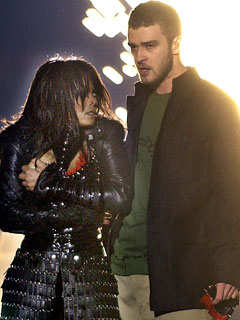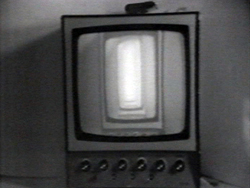
Robert Rauschenberg, set piece for "Minutiae," 1954.
Photo by Herb Migdall, 1976.
Courtesy Cunningham Dance Foundation.
| Minneapolis. I think I might be able to do it. I could live there if I could work or study at the Walker, with their AMAZING collection to keep me intellectually stimulated. That city isn't bad, from what I recall. This comprehensive acquisition of the Merce Cunningham Dance Company's collection only makes it that much more appealing. E-flux writes: The Walker Art Center and Cunningham Dance Foundation (CDF) announce the Walker's acquisition of a comprehensive collection of artist-made set pieces, costumes, painted drops, and props, created for the internationally renowned Merce Cunningham Dance Company (MCDC). Over the course of his nearly 70-year career, Merce Cunningham (1919–2009) redefined the visual and performing arts through pioneering collaborations with leading artists, designers, and musicians. More than 150 objects created by such artists as Robert Rauschenberg, Jasper Johns, Andy Warhol, John Cage, and Frank Stella will arrive at the Walker this year and be displayed for the first time beginning in November 2011. The placement of these works at the Walker supports a key goal of CDF's Legacy Plan—ensuring the preservation and ongoing accessibility of the Company's singular collection of 20th century art. The acquisition of major works from the MCDC collection aligns with the Walker's cross-disciplinary collecting strategy and its mission to present contemporary art in a multidisciplinary context, in order to foster an understanding of the nexus between artistic disciplines. The acquisition marks a major landmark in both the museum and dance fields, making the Walker a new center for research and scholarship of Cunningham's work, and presenting a new model for preserving works created by multiple artists in support of a single choreographer's artistic vision. "The acquisition of these works is groundbreaking for the Walker and for the museum field at large, affirming our longstanding commitment to bringing together diverse artistic practices to form a cross-disciplinary blend of programs," said Walker Executive Director Olga Viso. "We enjoyed a lasting relationship with Cunningham beginning in the early 1960s and look forward to inspiring future generations with programs, exhibitions, and new scholarship devoted to his legacy of innovation and collaboration." The Walker will present its first installation of works from the collection in November 2011, in an exhibition focusing on Cunningham's creative collaborations with major artists. This exhibition coincides with MCDC's final engagement at the Walker, to be presented November 4–6, 2011, as part of the Company's farewell Legacy Tour. The engagement continues a relationship that began in 1963, when MCDC was first presented by the Walker. The performances will be the company's first actually held inside the Walker (all past MCDC performances have been off-site or outdoors).The Walker will organize additional exhibitions exploring Cunningham's collaborations with artists over the next three years. The Walker is acquiring more than 150 objects dating back to 1942, when Cunningham began his distinguished 67-year career. During that time, Cunningham choreographed nearly 200 dances, most of which involved significant collaborations with leading visual artists who contributed unique set pieces and costumes. Notably, the collection contains Robert Rauschenberg's combine Minutiae (1954/1976) and his costumes for Antic Meet (1958), Frank Stella's set pieces for Scramble (1967), and the mylar pillows from Andy Warhol's Silver Clouds installation used for RainForest (1968), and works created independently by John Cage, Cunningham's life partner, that were ultimately incorporated into MCDC dances. The collection also includes set pieces and costumes created in the Company's later years by a younger generation of artists, including Ernesto Neto and the fashion designer Rei Kawakubo. To complement the acquisition and aid in ongoing scholarship, CDF will grant the Walker access to "Dance Capsules"—digital packages of archival materials which are being developed as another part of the Legacy Plan. Each Dance Capsule contains documentation of a Cunningham work, including performance videos, sound recordings, lighting plots, décor images, costume design, Merce Cunningham's choreographic notes, production notes, and interviews with dancers, and will serve as an invaluable supporting resource for Walker programming and the public. The acquisition is a gift of Jay F. Ecklund, the Barnett and Annalee Newman Foundation, Agnes Gund, Russell Cowles and Josine Peters, the Hayes Fund of HRK Foundation, Marion Stroud Swingle, Kathleen Fluegel, Barbara G. Pine, and the T. B. Walker Acquisition Fund, 2011. |




















